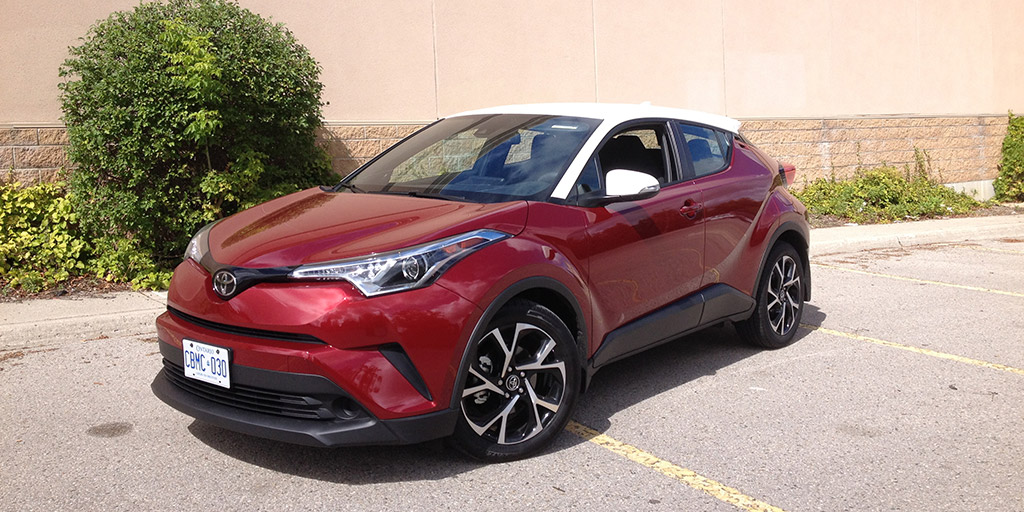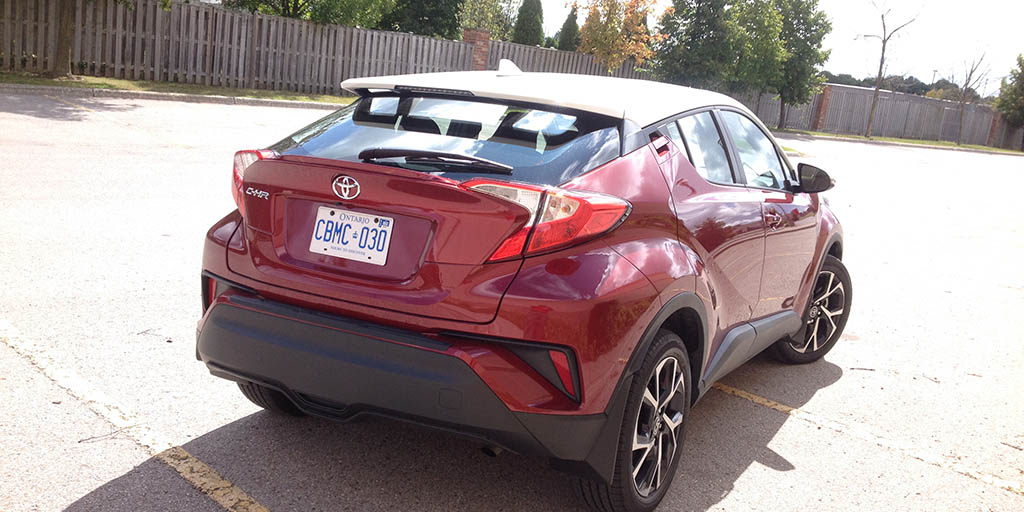The 2018 Toyota C-HR is a luxurious and comfortable car to ride in
 CREDIT: NAUMAN FAROOQ
CREDIT: NAUMAN FAROOQThe 2018 Toyota C-HR is a luxury car with space, adjustability and comfort, though it isn't the fastest running car in the shop. The Interrobang took it for a spin to test it out for ourselves.
At the 2017 North American International Auto Show, I had the pleasure of walking the event with Dr. Paul Deutschman, who is one of the most renowned and respected Canadian car designers. As we walked towards the Toyota booth, and looked around, he said: “While not all Toyota designs are attractive (pointing towards a new Prius), I love the fact that they have such variety, that all their cars don't look the same.” He was suggesting towards most German manufacturers, who build the same design in different sizes, hence they all look the same.
Dr. Deutschman then walked up to the C-HR, and said: “this is quite nice, I think it'll do well.” By the sheer number I've seen on the road, since its market launch earlier this year, I think it would be fair to say, that the C-HR (Coupe - High Rider) has gotten off to a great start.
But, is it selling well because of its looks, or is there something else to it as well?
To find out, I spent a week with this new CUV from Toyota.
First thing I learned, is that not everyone is a fan of the styling. While most people seem to like it, some do think it is over styled and hence unattractive. Personally, I love it. In a world filled with conventional, boring designs, the C-HR is a breath of fresh air, and I hope it encourages other automakers to think outside the box.
Styling features that really stand out include the (optional) two-tone paint job, and the flying roof design — which is being used by many manufacturers, but none have done it quite as successfully as Toyota and Lexus.
Step inside, and you'll find a similarly attractive interior, with lots of features that most people (including me) just wouldn't expect from a vehicle of this size or price point. The 2018 C-HR hence is available with goodies like a dynamic radar cruise control, auto high beam, a pre-collision system with pedestrian detection, lane departure warning with steering assist, all as standard — most other manufacturers charge a premium for such advanced technologies.
But wait, there is more, a lot more! You also get a very good infotainment system with a very clear screen which is easy to see. The system in the C-HR also has apps, and while it doesn't offer a built in navigation system, you can access it through an app — it'll just run off your mobile phone. Couple that with a standard reversing camera, power windows, locks, and mirrors, and you have a vehicle that has all the features you'd normally want. It also offers more space than you'd expect, with decent room for adults, even in the rear seats. The trunk however is quite small, but cargo room vastly improves when you fold down the rear seats.
Safety was given a priority, too, hence the C-HR has the usual array of front and side impact airbags. What is not usual, is the fact that the C-HR even has an airbag for your knees (only on the driver's side). It may look small and playful, but the C-HR is serious about safety.
If you're serious about driving, however, than the C-HR might leave you wanting for more. For starters, there is no manual gearbox available, and the only transmission offered is a CVT automatic. Then, the engine is not what anyone would call, ferocious. Under the hood lies an inline 2.0 litre, four-cylinder unit that produces 144 horsepower and 139 pound per foot of torque. Power goes to the front wheels only — sorry folks, while it may look like a mini off-roader, there is no allwheel drive option available for the C-HR — and since it has a base curb weight of 1497 kilograms, which makes it quite a bit heavier than its competition, it isn't fast.
In fact, it would take you roughly 11 seconds to sprint from zero to 100 kilometres per hour, so don't enter it in any drag race competition. However, in day to day traffic, the acceleration doesn't feel as bad as you might think. In the city, it felt fine, quite adequate. On the highway, you'd wish for more oomph, but again, it was fine. Thanks to its dynamic radar cruise control, which keeps it from running into the vehicle ahead, even if that car slows down to a stop, covering distances in the C-HR is quite relaxing. I just set the cruise at a comfortable highway speed, and it did the rest. My only gripe is, that the seat cushion is not as long as I'd like, which made it a tad uncomfortable on a long journey.
As you'd expect from a Toyota, the C-HR is quite economical to run, as I averaged 7.7 litres per 100 kilometres in my city and highway run (I actually managed to beat Toyota's own estimate of 8.2 litres per 100 kilometres on a combined run). So wherever you're going, the C-HR won't cost you a lot to get there.
If along the route, you come across some twisty back roads, do not fret, as the C-HR handles far better than you'd expect — thanks to Macpherson Struts in the front, and double wishbone suspension in the rear. Cornering is quite flat, and it hence gives you lots of confidence. My tester had the optional 18-inch alloy wheels, which wore P225/50 R18 tires - they gripped the road really well.
So, while the C-HR is out of its elements in the real jungle, it copes with the urban jungle quite satisfactorily. Let's face it, most people who buy SUVs or CUVs, never go off the road, so Toyota has built the perfect vehicle for this demographic.
They've even priced it well, as the 2018 Toyota C-HR is yours from $24,690.
If I had to live with just one car, the C-HR wouldn't be it — just not enough driving excitement for my needs. However, if I already owned a sports car, and just needed a daily runabout, I'd be happy to own a C-HR.















